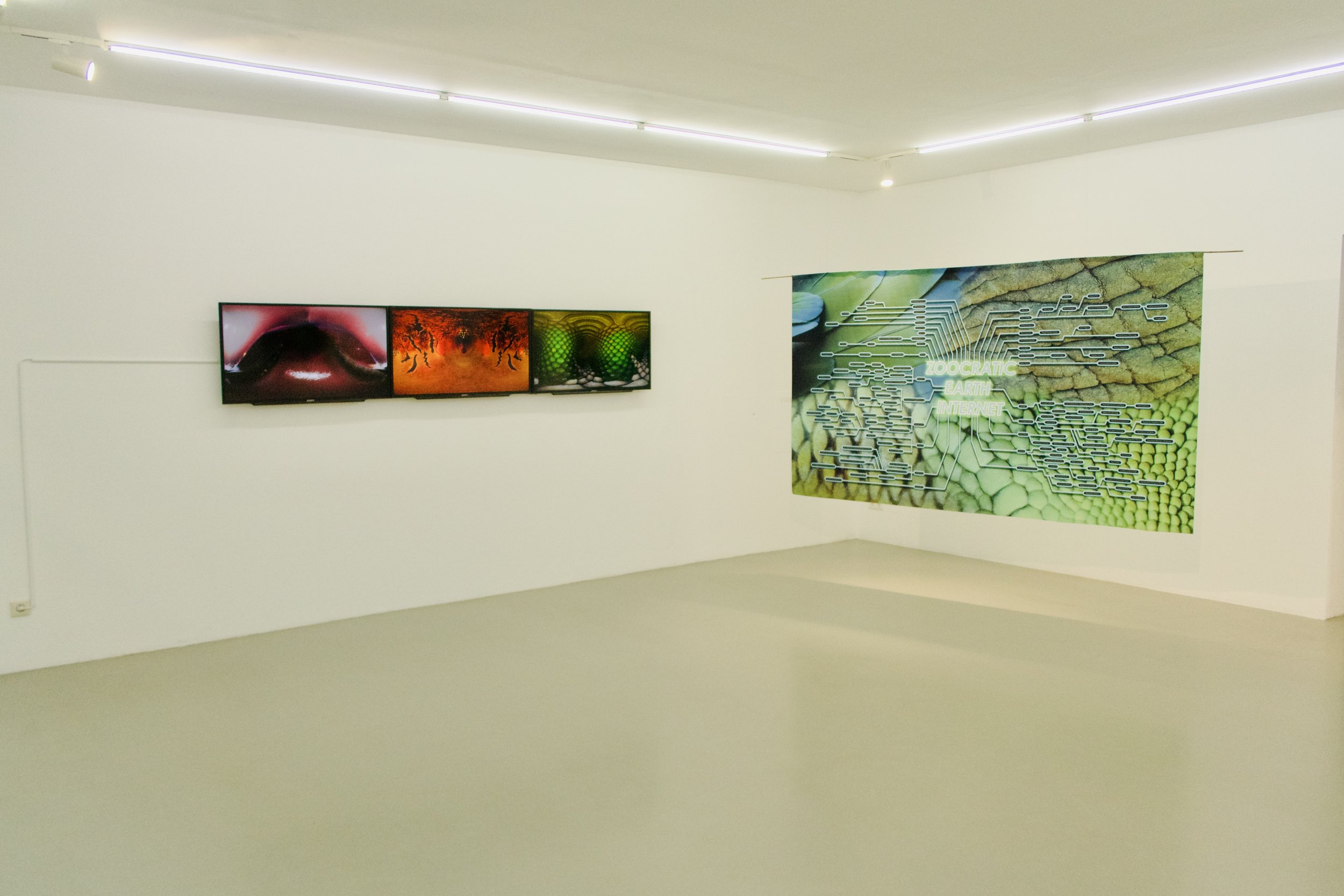TOP TIER
10. June - 24. July 2022
Kolbeinn Hugi
WORKS FOR SALE
When Zoocrazy arrived, it had already been years in the making: by the mid 21st century the idea of the Anthropocene directed all efforts of emotional and environmental empathy, but what was missing was everyone else. People shook their heads at anthropomorphism. They hunted, farmed, or kept everyone on a leash. Cyberspace hummed with the silence of animals. Man was dreadfully alone.
“Know thyself!”, philosophers had commanded ever since Socrates and the Greeks. The modern Cartesian solipsism led to an anthropology filled with delusions, for example that the human was fundamentally other than nature, or that there existed a noosphere in which human consciousness alone reigned supreme.
In the 19th and 20th centuries humanity connected the world with trains, commerce and communication and as a result they thought they were in control of capitalism and its tentacular reaches. At the same time, they split the atom and believed they were in control of the natural world. But in the shadow of the mushroom cloud, you don’t have all that much agency; the forests and its mycelium networks watched us in knowing silence. We traded objects of dead plastic instead of talking with animated life.
Once the ability to interface with all our other Terran friends became a reality, the conversations exploded. Humans used to fly kites: they used the wind to approximate birds and their magical ability to fly. Humans dreamed of flying in their sleep. Now of course we know what it means to fly, what birds really feel.
An economy built on ecology. Moore’s law inverted. Dolphins run Virtual Architecture studios scaffolding virtual edifices built with synthesized 3D echo location data.
Airborne interspecies delivery systems run on magnetoreceptive navigation networks. An Anima Mundi that buzzes with chitchat, chirps and interdependent cooperation.
So, when the ultimate act of empathy began to occur, and animal and human brain interfacing by way of the VRging sensory protocols started to become common, Second Nature came into existence. Here the virtual ecosystem allowed for a pluralistic, radically emphatic domain in which animals and humans enjoyed the zoocratic era of the post-anthropocene.
Text: John Holten
Kolbeinn Hugi is an artist, musician and thinker born in Reykjavík, currently operating from Berlin. His work points a way to different possible futures through the prism of digital culture, ecology and science-fiction. His work has been exhibited in various institutions on 4 different continents, from capitalist trailer parks in the MoMA PS1 to Communist-built Lenin Museums on the Siberian Planes. His recent work includes:
- Animal Internet (www.animalinternet.earth), a zoocratic, eco-futuristic vision of our planet where the animals are active users and builders of the internet through the use of neural interfaces.
- Cryptopia One (www.cryptopia.one), a gonzo-sci-fi video/installation series about cryptomining and colonialism on a small island obsessed with fantasy world building.
Kolbeinn Hugi has owned an autographed copy of “The Trials of Life” by David Attenborough since he was thirteen.









